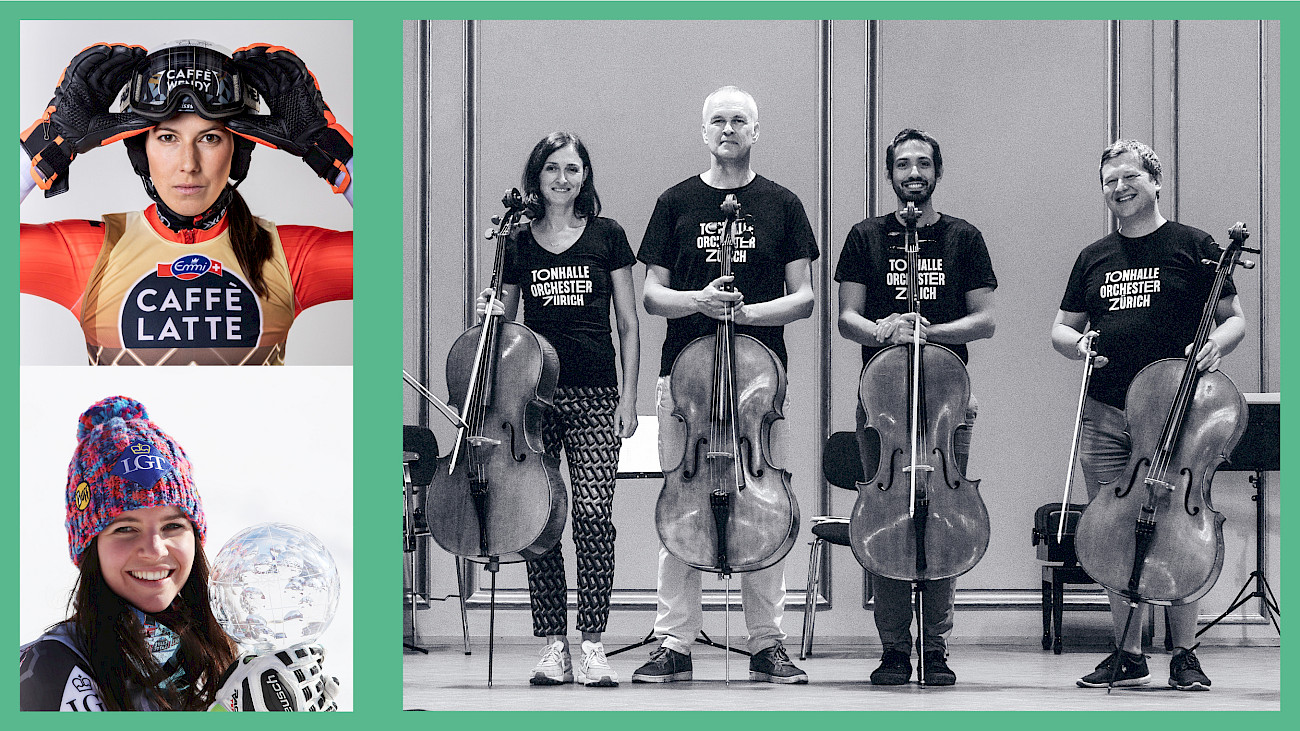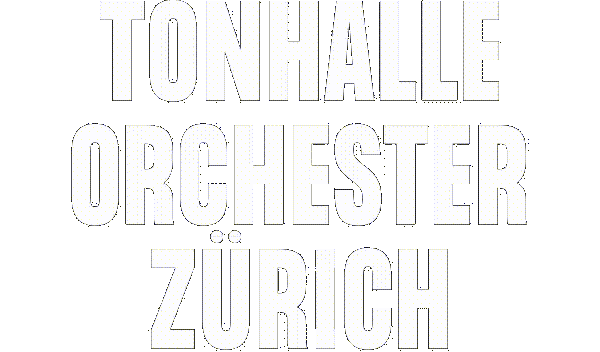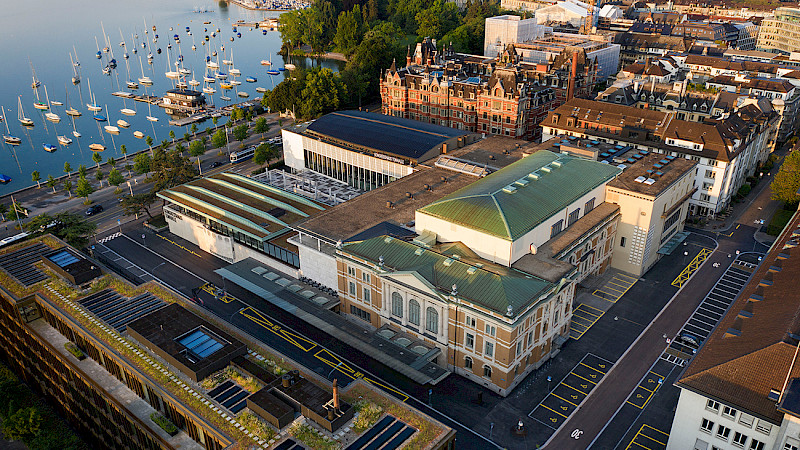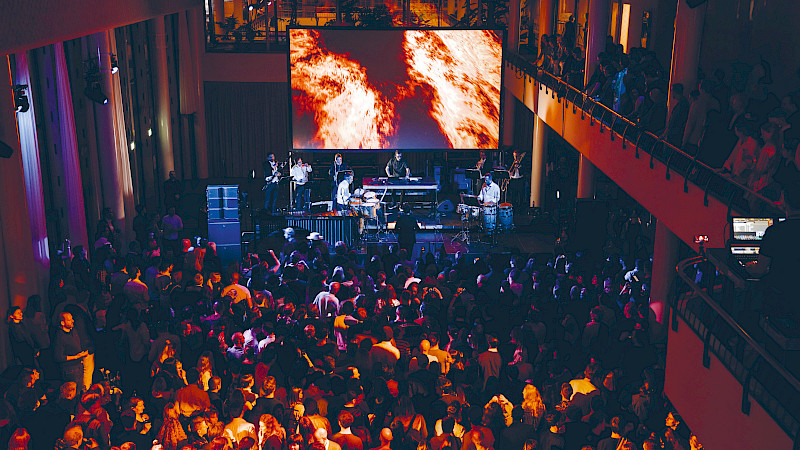
Wanted: a brand
What is the difference between sponsorship in sport and culture? What do they have in common? And where does it all lead? An exchange of ideas with marketing specialist Patrick Magyar.
Sponsorship is a discreet business, in sport as in culture: nobody likes to reveal figures, agreements are made away from the public eye. At the same time, sponsors seek public attention; they want and need to be recognised.
One person who knows how sponsorship works is Patrick Magyar. In his career, he was the founding CEO of FIFA Marketing AG, Managing Director of the America's Cup winning team Alinghi, Meeting Director of the world-famous "Weltklasse Zürich" athletics meeting and CEO of the 2014 European Athletics Championships in Zurich. Today, he advises young musicians on marketing, among other things.
In conversation, we soon come to brand value, which continues to play a central role in sponsorship. It is more important and more popular than ever before. Everyone should become a brand. But not everyone sees themselves as a brand.
The partnership between organiser and sponsor is close and lasts for years.
A product can become a brand if it is successful. Brand status is an honour for a product that has managed to hold its own against the competition. The road is long and arduous; it takes perseverance and innovation to reach the goal.
The central factor of any sponsorship is the value of the brand for a company. The name and logo must be sufficiently recognised and convey positive associations for sponsorship to be effective. The partnership between organiser and sponsor is close and lasts for years. Both sides benefit from it. For many companies in Switzerland, sponsorship is an integral part of their marketing communication. A not insignificant amount of the communication budget is channelled into supporting sport. This is still the biggest beneficiary when it comes to financial support, followed by culture and socially orientated platforms. There is a noticeable shift towards topics related to sustainability. Foundations in particular have been looking very closely at this for a few years now. And what about cultural sponsorship?
Brand emotionality
Sponsorship in general is still interesting for the supporter, says Patrick Magyar. Organisers are currently challenged more than ever to reinvent themselves and break new ground. The presentation in sport is certainly different to that in culture - in our case, classical music. And yet both must be orientated towards the target group so that they experience a corresponding transfer of an image or brand emotionality. "There is a tendency to think that you can sponsor everything equally well," says Patrick Magyar. "The question is whether an organiser is prepared to adapt their product so that it works for the sponsor and therefore remains attractive to the target group in the future."
A certain degree of flexibility can be seen in sport. The professionalisation of sports sponsorship has led to the emergence of many new approaches in recent years. If the sponsor recognises that its projects and events can be activated in an exciting way, sponsorship takes on an even more important role.
One successful example is UBS's sports sponsorship in athletics and the development of the UBS Kids Cup. The goal was clearly defined in 2011: To introduce more children to athletics in order to build up the next generation of athletes. This is how the largest movement platform for sport in Switzerland came into being. European indoor champion Angelica Moser and World Championship bronze medallist Simon Ehammer are just two of the figureheads of the "UBS Kids Cup Generation" who have made the leap from the Swiss final of the UBS Kids Cup at Letzigrund Stadium to world-class status and serve as role models for participants aged 7 to 15.
Breaking up structures
Culture, and classical music in particular, has much more rigid structures. This has always tended to be the case, as most of what is performed and played on stage is dozens to hundreds of years old. Today's scenario, however, should be: Rejuvenate the audience and thus renew it, use different media, create different framework conditions, etc. This is how Magyar sees it: "What happens on stage is no longer enough. Nobody would think of offering wooden benches in stadiums today." An exaggerated picture, of course, but close to the reality in some institutions. Some organisers of high culture have fallen out of time, he says. Which also has a charm - but one that is difficult to make money from. So what to do?
The example of the logo shows that the answer to this question is not a simple one. Logos on a footballer's shirt mean presence for the sponsor. The supplier has the say here. If you compare this with concerts of serious music, logos are very discreet: which conductors or soloists are already conspicuously marketed? If Ronaldo or Federer bring a shoe onto the market tomorrow, then that has a value. What product can Paavo Järvi bring to the market? His baton? His clothes? Probably not.
It's about stepping outside the box and leaving the comfort zone.
The framework in the classical music business is therefore tight. Apart from the CD, which today is mainly used for marketing purposes but can no longer be used to make money, there is little left. Conductors or soloists, but also an orchestra, only have the option of facing the audience, and not just on stage. The audience knows him/her or the orchestra, but what about the rest of the population?
Brand value is difficult to increase if nobody knows the people behind the brand, says Magyar. That's why some orchestras are already working on "selling" themselves on other stages - for example, the conductor can talk in panel discussions about how an orchestra works so that it plays in harmony. This has nothing to do with the actual music-making, but it does mean that you have to step outside and leave your comfort zone. "This raises awareness and conveys a different image of classical music," says Magyar. There are numerous opportunities for further marketing the orchestra (such as our "Tram for Two" video series, the collaboration with local businesses under the motto "In harmony with..." or the gallery and museum concerts under the title "classic meets art"). All of this, in turn, is interesting for sponsors
What does the future hold?
Even in sport, there are disciplines that are less attractive to sponsors than football, tennis, ski racing or ice hockey. There are "fringe sports" in which the Swiss are very successful, even among the best in the world, and which find it difficult to find a sponsor.
In principle, sport is capitalising on the trend towards interactive and concentrated activation. The possibilities of digitalisation are helping here. Sport also benefits from broadcasting, be it on national television or on a channel such as Sky. In contrast, there are very few private channels that broadcast classical concerts. State television has long since moved away from this. This means that you are more likely to watch a sporting event at home than a cultural event. The same applies to coverage in the print media. Not an easy starting position for classical music organisers.
Overall, the sums for local corporate support in sport and culture have become smaller. When it comes to international support, top stars are becoming increasingly important and valuable. Local and national event organisers are likely to lose out. This is a worrying development, as they are the ones who keep the cultural and sporting diversity of our community alive.
And what does this mean for event organisers? Staying in shape, breaking new ground, overcoming hurdles. Because important things are happening that should not be overlooked.
Translated with DeepL.com





